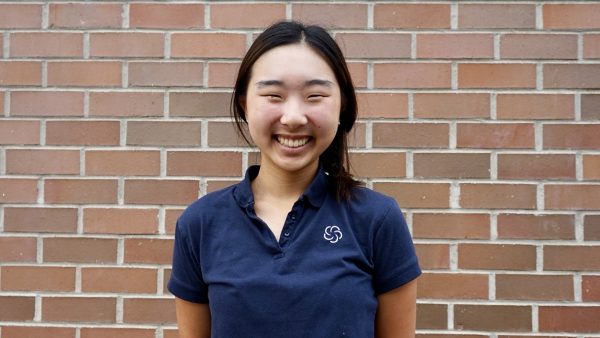The morning of Wednesday, Oct. 4th, Hannah Nguyễn, Director of DEIJ, was alerted about the publication of the Medium post. She said she was in a meeting, and read the post on her way to another. She said she emailed the article to admin, then several minutes later, addressed it with students.
Nguyễn was not the only faculty member unaware of this article. Among other members of faculty, there were common themes of surprise, sadness and disappointment.
“I think what hit me very strong was the disappointment that the author seemed to have further perpetuated the kind of leadership that they were criticizing,” new faculty member and history teacher Shona Schwartz said.
Schwartz said she felt that the framing of DEIJ in the Medium post was used in a way that created an unsafe environment for dialogue and involved students in what should have been a closed-doors faculty conversation.
Leading up to the Medium publication, some faculty members said they felt as though there had been a build-up of stress in the faculty, and larger Castilleja community – not only this year, but also last year, as a result of the unsuccessful move to the College of San Mateo (CSM).
“It doesn’t matter how you feel about specific initiatives, there is a limit to the human capacity to process anything, and we might’ve reached ours,” Castilleja Alum and history teacher Heather Pang said. “The move, the not-move. I think we maybe didn’t recognize how much of a cognitive load that was putting on us. We talked about it, we knew about it. But it was a huge stress.”
Upper School Dean of Students Eve Kulbieda shared that the time taken up from the situation with the CSM occupied time that would have otherwise been used for community discussions.
“Last year, yes, there were spaces [for open dialogue], but also with everything going on with the move, that often overshadowed a lot of other things,” Eve Kulbieda, Upper School Dean of Students, said.
Finding out that Nanci Kauffman, the former Head of School, was stepping down and the office of Dr. Nadia Johnson, the Assistant Head of School for Curriculum and Community, had been cleaned out, also had a resounding impact on the faculty community.
“When all these decisions started happening, maybe the adults felt like it was all happening to them. Some faculty maybe felt like they didn’t get a say. And in some decisions, you don’t,” Kulbieda said.
Even after the publication of the Medium article, some faculty feel like there are more conversations to be had about DEIJ and recent changes around campus.
“[The clarity] I need from leadership is that we still have a commitment to DEIJ. And I haven’t heard that,” Nguyễn said. “They haven’t answered to the claims that they’re regressing on these initiatives. That’s a very serious claim. And I’m actually quite surprised that that has not been addressed.”
So far, the only clarity the administration or the leadership team have provided was in the Oct. 4 community letter sent to parents on the day of the Medium publication.
According to Nguyễn, the points and ideas brought up in the Medium letter have actually been raised before.
“I have actually emailed Ms. Layendecker with some of the points in the letter before – which means I have no problem signing my name – because I know in my position, that’s my responsibility as Director of DEIJ to speak up about these issues,” Nguyễn said.
Nguyễn also mentioned that she was not aware of all the points brought up in the post.
Kathy Layendecker, the current Acting Head, said that she had only been made aware of one of the many issues the Medium post brought up.
“If I recall correctly, the only issue I remember mentioned in there that had been addressed with me is the experiential learning and how we’ve shifted back from having it in isolation in a single afternoon to integrating it back into the curriculum where a lot of that programming had been already,” Layendecker said.
In terms of consideration of student’s opinions into the removal of experiential learning, Layendecker said that the administration had, in fact, taken into account feedback from students. “We were getting some feedback that, particularly in the Middle School, only having two classes a week was difficult, and there was a lot of confusion about homework.”
According to Layendecker, the administration had reviewed data, as well as student and faculty input, before distributing several drafts of the schedule to faculty (despite the comment of a tight timeline in the Medium post).
The publication of the Medium article had a large impact on the faculty community. Nguyễn, because of her position as Castilleja’s Director of DEIJ, has been cast into the spotlight.
“It’s always uncomfortable,” she said “And at some points, it did feel unsafe.”
She also said that it was “natural” for her to feel as if there was a “target on her back,” given the content in the post.
“It was heartbreaking to read, because it made me question whether I belonged,” Nguyễn said.
Despite the tension, Nguyễn mentioned that being in the spotlight has empowered her to speak out more. “I am in communication with leadership, and I’m drafting something to share my opinions,” she said.
Looking ahead, members of faculty have different hopes for the future, but across the board, they are incredibly proud of their students.
“I’ve been so pleased at how many students have said, ‘I just want to be here to learn – how do I do that?’ And not in a way that suggests they don’t care about issues around school, but in a way that suggests they really know what their purpose is,” Pang said.
Schwartz shared that students are her “North Star.”
“I think that there are two parts to the job. I think when you’re a teacher, there’s the four walls of your classroom. And then there are things that are going on outside, and for me, my North Star is always the four walls of my classroom,” she said.



